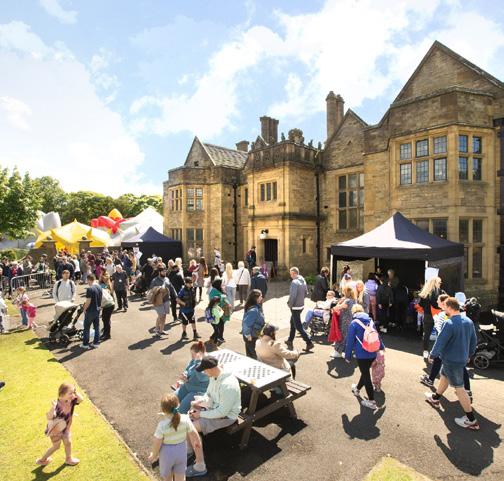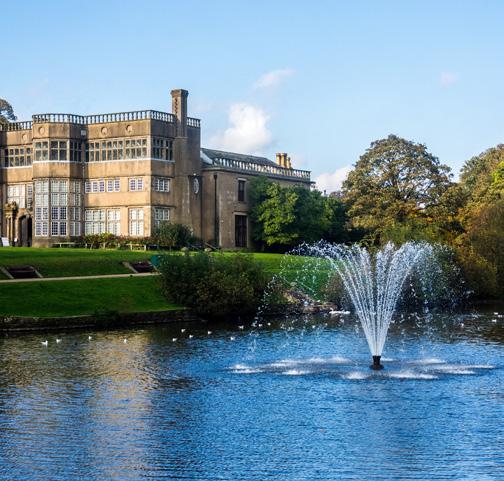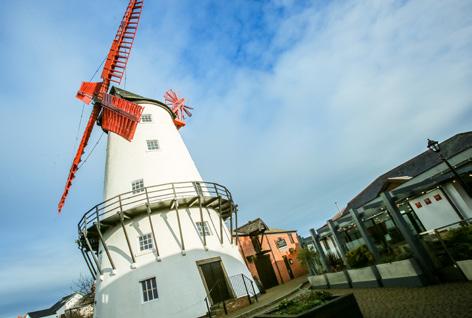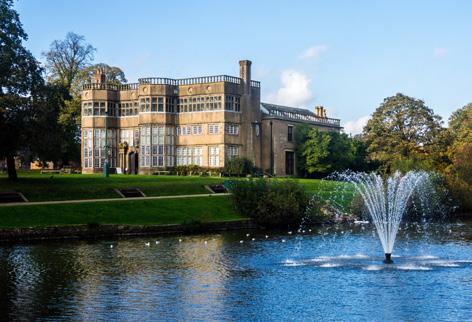Local Government Reorganisation in Lancashire
The case for three unitary authorities for Lancashire









Our place. Our future. Our Lancashire. Putting people at the heart of change.

The case for three unitary authorities for Lancashire









Our place. Our future. Our Lancashire. Putting people at the heart of change.
Lancashire’s current system of 15 councils was designed for a very different era. Today, it is holding the county back - creating complexity, slowing decisions, and making it harder to tackle the challenges our residents and businesses face.
Local government across England is changing. Successive governments have been clear: simpler, stronger, more strategic local institutions are critical to deliver growth, improve services, and unlock devolution. The case for reorganisation in Lancashire is clear:
Fragmentation limits delivery
Fifteen councils means fifteen plans, budgets, and decision-making processes duplicating effort, diluting leadership, and confusing accountability.
Demand is rising fast
Growth potential is untapped
An ageing population, rising complexity in adult and children’s services as well as the need for more housing, and growing health inequalities are stretching the system beyond its limits.
Lancashire’s £38bn economy is built on globally significant assets - advanced manufacturing, energy, ports, and universities - but governance complexity has constrained investment and delivery.
Devolution is accelerating
To capitalise on powers and resources like Greater Manchester, Liverpool City Region and other devolution areas, Lancashire must be able to speak clearly, act decisively and plan strategically.
This is a once-in-a-generation opportunity to redesign local government to safeguard Lancashire’s future. The three unitary model is the only option that can deliver better services, stronger leadership and faster growth, while staying connected to the communities and places that define us.
Three unitary councils in Lancashire are built on a clear vision to create a modern system of local government reflecting real places that matches our scale and ambition, strengthens collaboration and innovation, and provides a platform for improved outcomes for residents, businesses and communities.
Our vision is for three new unitary councils, balanced in scale and rooted in real places, to create the capacity and clarity needed to unlock Lancashire’s potential. They will deliver stronger services for geographies that reflect places, communities and key partner footprints, give businesses and government credible partners for growth and devolution, and reconnect decision-making to the places people live, work and learn in.
Establish a clear and stable government footprint
Ensure continuity of service during transition
Align organisational boundaries with functional economic geographies
Embed a culture of innovation and continuous improvement
Create governance structures that provide a credible platform for future devolution
Strengthen democratic community connection in services
Appropriate scale and balance to support efficiency and resilience
We are proposing three unitary councils for Lancashire, the only configuration that meets all six of the Government’s criteria for local government reorganisation while reflecting the way Lancashire’s economy, services and communities already work and providing the best platform for the future.
Lancashire - Population: 493,387
Combines iconic seaside towns of Fylde, Blackpool, Wyre and Lancaster, major energy and defence industries, and world-class research at Lancaster University. From Blackpool’s visitor economy to Heysham’s energy cluster and the Eden Project, it is a hub for clean growth, innovation, and sustainable tourism, linked by strong transport corridors and shared economic assets.
Lancashire - Population: 586,357
Unites Burnley, Blackburn with Darwen, Hyndburn, Pendle, Rossendale and Ribble Valley as a nationally significant hub for advanced manufacturing, aerospace and materials innovation. It blends industrial expertise with emerging digital and green industries, entrepreneurial SMEs, strong university links, cultural regeneration and outstanding natural landscapes.
Lancashire - Population: 521,811
Brings together Preston, Chorley, South Ribble and West Lancashire, combining strengths in advanced manufacturing, aerospace, digital and agri-tech industries. Key assets include the University of Lancashire’s Engineering and Innovation Centre, Samlesbury Enterprise Zone and Strawberry Fields Digital Hub, supported by strong transport links, City Deal investment and cross-regional economic connections.
Optimal balance to deliver new relationship with residents and modern, outcome focused services
Meets all six Government’s tests Closely aligns with the footprint of key partners It balances identity with strategic capacity
Matches economic geography
▶ Too broad; blur coast/central/ Pennine corridors
▶ Aligned to coast, central and Pennine growth corridors
▶ Splits corridors and compromises growth potential
Aligned with key partners
▶ Overstretch across footprints; risk of disruption to key partners
▶ Fully coterminous with NHS/ICS, police divisions and fire
▶ Fragmented across systems; risk of disruption to key partners
Balanced tax base
▶ Concentrates deprivation/ legacy costs in extremely large authorities
Local identity ▶ Distant; dilutes sense of place and identity
▶ Spreads need and revenue; resilient, investable
▶ Narrow bases; volatility and uneven resilience
Transition risk ▶ Larger change programme with significant restructuring into two very large authorities
Devolution case
▶ Too remote/centralised; weak local mandate and plurality
▶ Ability to maintain strong identify of place, supporting focused locality delivery and neighbourhood governance
▶ Most stable and familiar; mirrors the existing number of upper-tier authorities and allows a smoother, more manageable transition
▶ Credible scale and local mandate; three strong and place-aligned voices
RED - Option does not meet the definition of what good looks like across the evaluation criteria
AMBER - Option partially meets the definition of what good looks like across the evaluation criteria
GREEN - Option meets the combined definition of what good looks like across the evaluation criteria
▶ Built around real places, but smaller authorities may have less capacity to respond to local needs
▶ More complex overall change, with several new organisations to stand up and co-ordinate
▶ Fragmented ask; uneven capacity; harder to present a coherent, investable proposition
Only three new councils align with real economies and service footprints, balance risk, keep decision-making local and meet every Government test without compromise. Other options all fall short of what Lancashire needs. A two-council model would be too large and remote, misaligned with real places and key service boundaries and concentrated in financial risk; a four- or five-council model would fragment economic corridors, create uneven capacity and weaken the devolution case.
Balancing identity with strategic capacity:
Delivers the scale needed to plan strategically while still being rooted in real communities, travel-towork areas, housing markets and service geographies.
Meets every government test:
Satisfies all of the government’s criteria on scale, sustainability, identity, service integration, governance and financial resilience.
Deliverable and locally supported:
Backed by both upper- and lowertier councils, supported across political parties and endorsed by public sector partners and the business community.
Right scale for devolution and strategic leadership:
The right balance of scale and local connection to support devolution and work alongside regional partners like Greater Manchester, Liverpool City Region and Cumbria to unlock greater

Stronger financial resilience with lower transition risk:
Combination of balanced tax bases, sustainable demand profiles and sufficient population size for efficient commissioning alongside far lower transition risk.
Best platform for integrated public services:
Most closely aligns with NHS and ICB boundaries as well as mirroring the operating footprints of key partners including police and fire and rescue, enabling joined-up planning for health, care, housing, transport and community
Keeps services accountable and connected to place:
Simplifies governance without losing local voice, with a clear approach to delivering joined-up community and neighbourhood working and governance, so that communities remain closely involved in decision-making while
Drives inclusive growth across real economic geographies:
Maps exactly with Lancashire’s functional economic areas to create a structure that can connect people, places and opportunities more effectively than any alternative.

Easy to understand, not distant.
Three councils replace fifteen, making services clearer without creating councils that are too large and remote or too small to make a difference.
Local voice with real power. Balanced footprints and localitybased models reflecting real places, so decisions are shaped by communities while services are delivered effectively and consistently.
A public service system that works together. Matching key partner footprints, which none of the other options do, means a greater ability to work jointly on care, health and safety.
Decisions at the right scale.
Three councils mirror the coast, central and Pennine growth corridors, so investment choices happen where markets, skills and supply chains already exist.
Strategic leadership. Each growth area can shape housing, transport and employment plans, instead of competing or diluting priorities.
Growth that’s easier to unlock.
Because councils reflect real economic areas, planning, infrastructure and skills investment can be co-ordinated, something other models simply cannot do.
Boundaries that fit. Three councils that match NHS, policing, fire, skills and transport footprints, so services can be planned and delivered together rather than across awkward divides.
Collaboration that’s easier and faster. Shared priorities can be agreed and acted on without the complexity of too many councils at the table or the remoteness of very large ones.
A credible platform for devolution. Three councils combine scale, local legitimacy and financial strength - the conditions government is seeking when transferring powers and investment.
A seamless visitor experience. Three councils can plan tourism, culture and transport to connect coast, countryside and towns. Visitors will find it easier to explore Lancashire as a single destination rather than a patchwork of places.
Stronger destinations, shared investment.By working at the right scale, councils can coordinate festivals, heritage and cultural programmes, supporting destination management plans that extend stays and raise local spend. Tourism will become a shared economic driver, not a competition between districts.
Sustainable tourism that benefits communities. With joined-up planning and investment, tourism can grow responsibly to protect landscapes, support local businesses, and reinvest visitor income in culture, skills and community wellbeing.
Combines iconic seaside towns of Fylde, Blackpool, Wyre and Lancaster, major energy and defence industries, and world-class research at Lancaster University. From Blackpool’s visitor economy to Heysham’s energy cluster and the Eden Project, it is a hub for clean growth, innovation, and sustainable tourism, linked by strong transport corridors and shared economic assets.



Unites Burnley, Blackburn with Darwen, Hyndburn, Pendle, Rossendale and Ribble Valley as a nationally significant hub for advanced manufacturing, aerospace and materials innovation. It blends industrial expertise with emerging digital and green industries, entrepreneurial SMEs, strong university links, cultural regeneration and outstanding natural landscapes.



Brings together Preston, Chorley, South Ribble and West Lancashire, combining strengths in advanced manufacturing, aerospace, digital and agri-tech industries. Key assets include the University of Lancashire’s Engineering and Innovation Centre, Samlesbury Enterprise Zone and Strawberry Fields Digital Hub, supported by strong transport links, City Deal investment and cross-regional economic connections.



This proposal has been developed following a detailed options appraisal including data analysis and assessment of the evidence base. Three new unitary councils will provide the clarity, capacity and coherence that Lancashire needs to meet today’s challenges and seize tomorrow’s opportunities. By bringing services, economies and communities together around clear, balanced geographies, they will:
Integrate services around people’s lives.
Because the threeunitary model aligns closely with community, NHS, care and partner footprints, it allows services to be strategically planned and delivered to underpin systemwide prevention. The larger two-unitary model risks detaching services from local contexts, while four or more would fragment delivery and complicate partnerships.
Power growth across real economic geographies
The three-unitary model mirrors Lancashire’s actual economic patterns - the M65 advanced manufacturing corridor, the M6/M55 innovation and logistics hub, and the coastal energy and visitor economy. These functional geographies would be split by a four-unitary model and diluted in a two-unitary model.
Accelerate devolution
With three strategically capable councils working collectively through the Combined County Authority, Lancashire will present government and investors with credible, balanced partners. Fewer councils risk being too large and distant to connect with local priorities, while more councils risk fragmenting leadership and slowing decisionmaking.
Strengthen local identity and accountability
The three-unitary model embeds democratic connection deep into the way councils will work, with strengthened localitybased governance ensuring that decisions are shaped closer to the people they affect. This approach keeps services visible and responsive, giving communities a stronger voice in setting priorities.
Create resilience and financial sustainabilility
Three councils create balanced populations, fairer tax bases and evenly distributed demand, generating financial sustainability and enabling sustained investment in prevention and frontline services. Smaller councils would struggle to achieve this resilience, while larger ones would lack the flexibility to tailor solutions to local needs.
Three unitary councils deliver a stronger, more balanced financial case than any of the other proposed options, combining credible savings with the capacity to invest in services, work with partners, support economic growth, unlock deeper devolution, and connect at a local level to places people live, work and learn in.
£188.4m
Total cumulative net benefit by 2032/33
Up to £29m per year
Achieved through consolidating leadership teams, governance, and corporate functions into three councils, with savings invested in key areas to protect and improve service quality.
£66.9m
Annual recurring net benefit from 2031/32
Transformation Savings
Up to £63m per year
Generated by modernising service delivery, redesigning commissioning, and shifting investment towards prevention and early intervention to reduce long-term demand.
Property and
Efficiencies Up to £6m per year
Delivered by leveraging greater purchasing power, rationalising estates and contracts, consolidating ICT, and creating single commissioning strategies across wider footprints.
Leadership and Back Office Efficiencies
Up to £11m per year
Savings from leaner leadership model across three unitaries and consolidation of back office functions, enabling more efficient day-to-day operations.
These savings enable investment in prevention, workforce and place-based delivery models, building resilience into the system for the long-term. The three unitary model is the only option that can deliver savings at this level and offers the right balance of scale and local connection to deliver sustainable improvements for residents, businesses and partners.
The three unitary proposal will be submitted in November 2025 to the Secretary of State, with a decision expected in 2026. But the conversations with residents, businesses and partners will continue, as will the planning required to move quickly and confidently when the time comes to reorganise how local government in Lancashire works.
Outcome:
Delivery structure and detailed plan established to oversee transition and implementation.
Decision Mobilisation
Outcome:
Shadow Authority in place, ready to take on functions from Vesting Day.
May 2027 - March 2028 April 2028
Outcome:
New council ready to operate effectively from Vesting Day.
Outcome:
New council fully operational and progressing its longer-term reform and transformation goals.
▶ Mobilise implementation team and setup programme board
▶ Confirm programme governance and implementation planning framework
▶ Develop and agree design principles for the new councils
▶ Begin early engagement with members, districts, and partners
▶ Prepare draft operating model and implementation plan for approval
▶ Implementation team fully mobilised
▶ Finalise operating model
▶ Develop and deliver detailed transition plans for all services
▶ Establish and Shadow Authority arrangements
▶ Hold elections for Shadow Authority (May 2027)
▶ Shadow Authority leads preparations for the new council
▶ Finalise constitution, policies, and budget
▶ Agree senior structure and appointments
▶ Prepare for service delivery under new arrangements
▶ Develop communications and staff engagement programme
▶ New council operational from Vesting Day
▶ Embed new governance, service and management arrangements
▶ Begin longer-term transformation and improvement in line with business case
▶ Focus on service integration, and customer experience
Our place. Our future. Our Lancashire.
Three new unitary councils represent a once-in-a-generation chance to reshape how Lancashire works.
They will deliver simpler services, stronger leadership and a credible partner for Government.
They will match the real places that make up our economy, our key partners and our communities.
By putting people at the heart of change, they will create the platform to unlock investment, tackle inequalities and build a future that works for everyone.
This is the opportunity to turn complexity into clarity, fragmentation into focus, and potential into prosperity.
Our place. Our future. Our Lancashire.